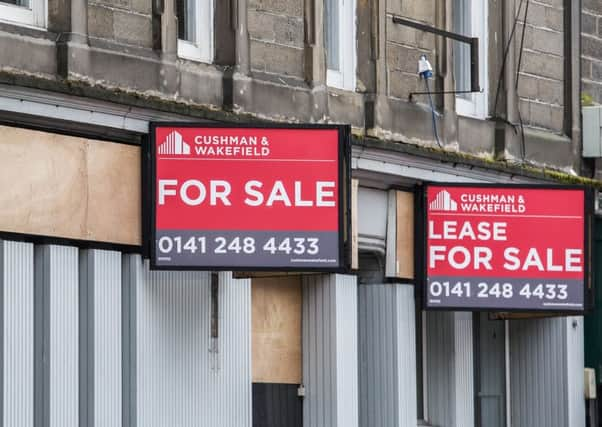Call to revive high street after 615 Scots retailers fail in 10 years


The business, whose office network north of the Border encompasses Edinburgh, Glasgow, Stirling, Dumbarton and Hamilton, has analysed official Insolvency Service statistics and found that 615 Scottish retailers have gone through a formal insolvency procedure and gone bust over the last ten years.
That is equivalent to 1.2 retailers a week over 520 weeks.
Eileen Blackburn, head of restructuring and debt advisory at French Duncan, said those in retail will not be surprised by the figures. “Changing shopping habits, the dramatic growth in the popularity of online buying, and the punitive nature of business rates and rents have all contributed to the continued closure of countless shops in our city and town centres.”
Advertisement
Hide AdAdvertisement
Hide AdBlackburn also stressed that such firms folded because there had no other option. “This is likely to be the tip of the iceberg, with many more retailers having closed down voluntarily before debts became insurmountable. For every insolvent business there are likely to be half a dozen others that closed before things became that desperate.”
She flagged a similar situation in the casual dining sector, which has seen a high amount of closures, “and our high-street shops remain as susceptible to these problems” amid changing consumer behaviour. “Equally, councils and commercial landlords continue to remain unsympathetic to the shifting needs of retailers and the changing demands of the modern high street.”
Blackburn concluded: “It is clear that bricks and mortar are losing out to online clicks in the battle to stay afloat. Some of the issues are undoubtedly with businesses that failed to adapt to changing market trends but, equally, the landlords and councils are also responsible for inflexible and harsh rent and rate levels more suited to different economic times when the high street was king.
“If the high street is to recover there needs to be effort on all sides to produce a more attractive offering to consumers that is priced accordingly to attract dynamic and vital young retailers back to the high street to revive an essential part of town and city living. If something isn’t done then there will undoubtedly be more closures, and more darkened city and town centres attracting fewer and fewer shoppers.”